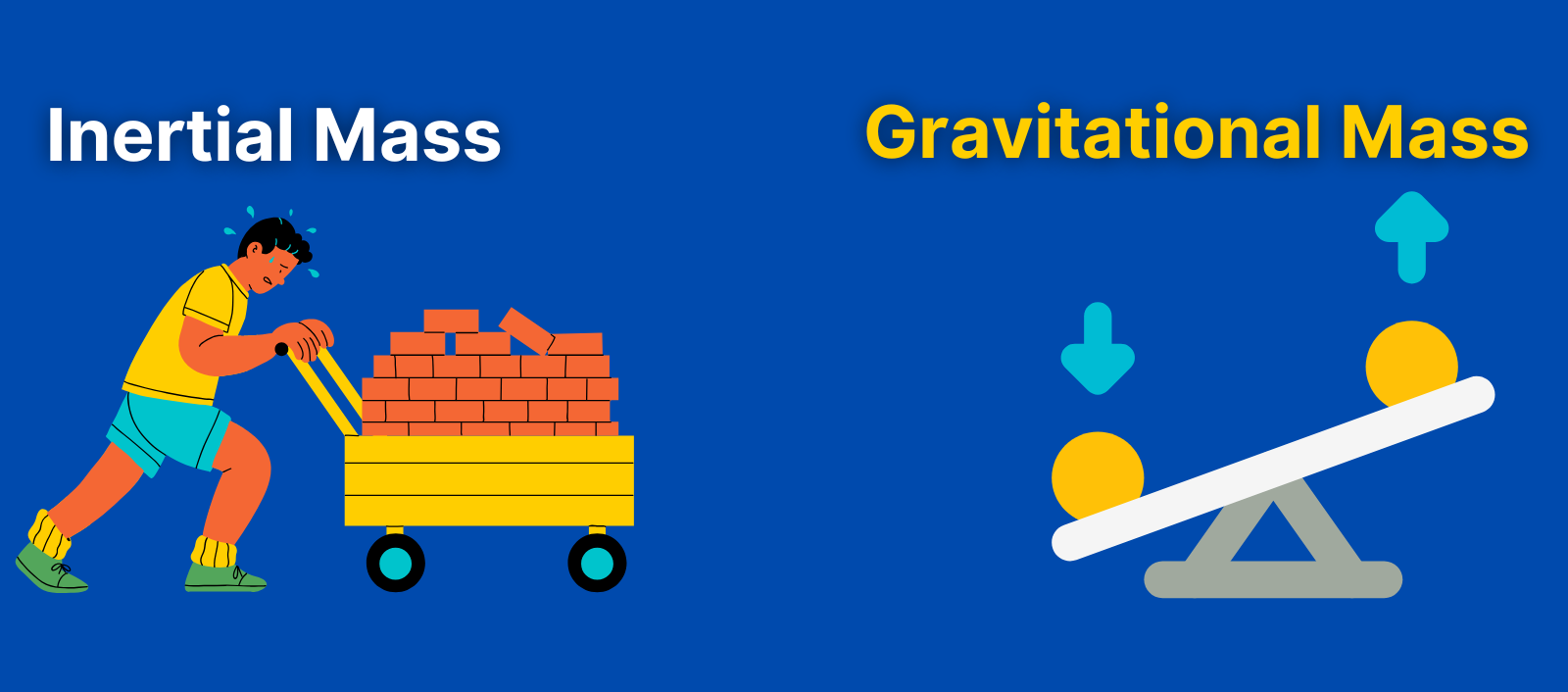Curious about the difference between inertial mass and gravitational mass ? You are in the right place. In simple terms, inertial mass shows how much an object resists acceleration. It’s the reason moving a heavy object takes more effort.
Gravitational mass measures how strongly an object attracts others. This is the mass that creates weight when under gravity. Though they may sound alike, these two types of mass play unique roles in physics.
Understanding both can give you insight into how forces work in everyday life. Let’s explore what sets inertial and gravitational mass apart. If you are unsure about what mass is, check out our guide: What is Mass?
Inertial Mass
Inertial mass measures how much an object resists changes in motion. It reflects the force needed to accelerate the object. The higher the inertial mass, the harder it is to change the object’s speed or direction.
Why Does a Heavier Object Need More Force to Move?
A heavier object has greater inertial mass, meaning it resists motion more. This is why pushing a large truck requires more effort than pushing a small bicycle.
Gravitational Mass
Gravitational mass measures how strongly an object attracts other masses due to gravity. It determines the weight of an object in a gravitational field. The greater the gravitational mass, the stronger its pull on surrounding objects.
Why Do All Objects Fall at the Same Rate?
According to Galileo’s principle, in the absence of air resistance, all objects fall at the same rate, regardless of mass. This happens because gravitational force and inertial resistance cancel out, leading to equal acceleration.
Difference Between Inertial Mass and Gravitational Mass
| Aspect | Inertial Mass | Gravitational Mass |
|---|---|---|
| Definition | Inertial mass measures an object’s resistance to changes in motion. | Gravitational mass measures an object’s attraction to other masses through gravity. |
| Role in Physics | It determines the force needed to change an object’s speed or direction. | It affects the strength of gravitational pull between objects. |
| Measurement Method | You measure inertial mass by applying a force and observing the object’s acceleration. | You measure gravitational mass by observing the gravitational force between objects. |
| Formula | F=m×a – Force (F) equals mass (m) times acceleration (a). | F=Gm1×m2/r2 – Gravitational force depends on mass and distance. |
| Fundamental Law | Newton’s Second Law of Motion relates force, mass, and acceleration. | Newton’s Law of Universal Gravitation explains gravitational attraction. |
| Practical Example | Pushing a car requires more force if the car’s inertial mass is high. | A heavier object falls faster because its gravitational mass increases its weight. |
| Physical Meaning | It represents how “stubborn” an object is to motion changes. | It represents how strongly gravity affects an object’s weight. |
| Role in Daily Life | Inertial mass explains why heavy objects resist quick movements. | Gravitational mass explains why we feel weight and why objects fall. |
| Equal in Value? | Yes, for most objects, inertial mass equals gravitational mass in value. | Yes, they are typically equal, though they describe different physical effects. |
| Key Difference | It focuses on resisting motion, not gravity. | It focuses on gravitational interactions, not resistance to motion. |
How Does Inertial Mass Affect Space Travel?
In space, inertial mass determines how much thrust is needed to move a spacecraft. A larger inertial mass requires more force to accelerate, making fuel efficiency critical in rocket design.
Why Is Gravitational Mass Important in Astronomy?
Gravitational mass helps scientists calculate the gravitational pull of planets, moons, and black holes. The gravitational interaction between celestial bodies influences orbits, tides, and planetary motion.
What Experiment Proves That Inertial and Gravitational Mass Are Equal?
The Eötvös Experiment confirmed that inertial and gravitational mass are equal by showing that all objects fall at the same acceleration under gravity, regardless of mass. This principle is fundamental in Einstein’s theory of general relativity.
Why Choose Tutorhelpme Physics Tutors
Expert Knowledge: Our physics tutors are experienced professionals with deep subject knowledge.
Personalised Support: Tutors tailor sessions to match your learning style and needs.
Clear Explanations: We simplify complex concepts, making them easy to understand.
Exam Preparation: Get help with exam strategies to improve your confidence and results.
Flexible Learning: Choose times that fit your schedule, whether you need regular sessions or last-minute revision.
Affordable Rates: Quality tutoring at prices that suit your budget.
Interactive Tools: Engage with interactive online resources that make learning dynamic.
Progress Tracking: Regular feedback helps track your progress and improve weak areas.
Convenient Online Sessions: Access top tutors from anywhere, saving travel time.
Student-Centred Approach: We prioritise your goals, making each session productive and supportive.
Read More what are the different types of mass in physics?
FAQ’s
Are gravitational mass and inertial mass the same?
Gravitational mass and inertial mass are equivalent in value but describe different properties: gravitational pull and resistance to acceleration, respectively.
why gravitational mass is the same as inertial mass?
Gravitational mass equals inertial mass due to the Equivalence Principle, suggesting gravity and acceleration affect objects identically in physics.
What is Eötvös Experiment?
The Eötvös Experiment tested whether inertial and gravitational mass are equal. It showed that all objects fall at the same rate under gravity, confirming a key principle of general relativity.
Can gravitational mass change in space?
Gravitational mass is intrinsic and does not change. However, an object weighs less in space due to weaker gravity.
Why do astronauts feel weightless in space?
They experience free fall because they are constantly falling around Earth while in orbit, creating the illusion of weightlessness.

